 Sneed B. Collard III
Several years ago, I rode the world’s fastest elevator to the top of one of the world’s tallest buildings—Taipei 101. Shaped like an elegant stalk of bamboo, Taipei 101 soars 1670 feet above the island nation of Taiwan. However, the engineers who designed the building faced two monumental challenges. The first is that dozens of earthquakes shake Taiwan each year. The second is that in an average year, Taiwan gets hammered by three or four hurricanes, or typhoons. How, engineers wondered, could they keep people comfortable inside Taipei 101 when it swayed back and forth? More important, how could they keep the building from getting damaged or collapsing in a massive earthquake or 100 mile-per-hour winds? One solution: a damper ball. Damping devices are weighty objects that can reduce the motion of a bridge, building, or other structure. In the case of Taipei 101, engineers placed the damper ball near the top of the building—the part that sways the most. The ball is hung from thick cables inside the building and rests on giant springs or “dampers.” One of Isaac Newton’s basic laws of physics is that an object at rest tends to stay at rest—and the damper ball proves it. Every time Taipei 101 starts swaying, the damper ball wants to stay where it is and “pulls back” on the building, reducing how far the building moves. When the building sways in the opposite direction, the process repeats itself—but in the reverse direction. Of course the building also pulls on the damper ball, but the ball’s movements are restricted by the dampers it presses against. Does the system work? You bet. The damper ball inside of Taipei 101 reduces the building’s movement by 30 to 40 percent! Of course not just any damping device could protect an enormous building like Taipei 101. Taipei’s damper ball weighs 1.5 million pounds—as much as two fully-loaded jumbo jets. It is composed of 41 circular steel plates that stand taller than a one-story house. In 2008, when a giant earthquake hit mainland China, the people of Taiwan could feel it hundreds of miles away. The damper ball did its job, resisting Taipei 101’s movement, keeping the building safe. During Typhoon Soudelor in 2015, the damper again worked like a charm, protecting the building against 100- to 145-mile-per-hour winds. Besides protecting Taipei 101, the damper ball has become a major tourist attraction. Each year, thousands of visitors ride to the 89th floor. They take selfies next to the damper ball. They even take “Damper Baby” souvenirs home with them. If you’re ever lucky enough to visit Taiwan, check it out!
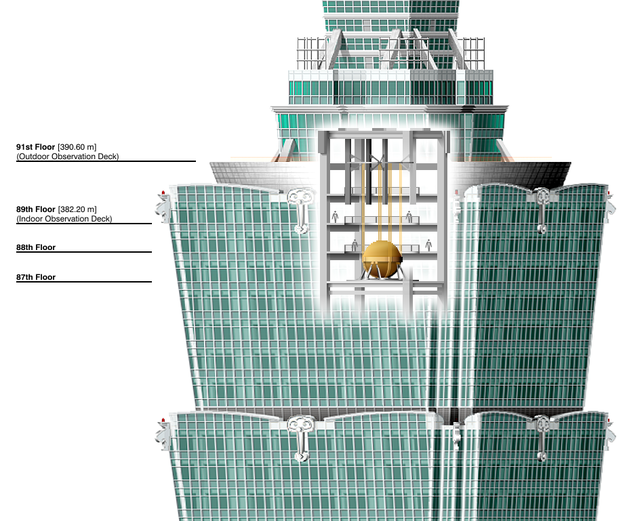 The damper ball is visible between the 89th and 91st floor of Taipei 101 and has become an attraction for tourists. 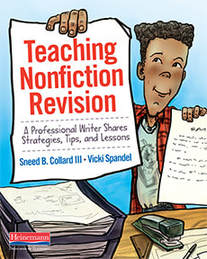 Sneed B. Collard III is author of more than eighty award-winning children’s books as well as a new book for educators, Teaching Nonfiction Revision: A Professional Writer Shares Strategies, Tips, and Lessons. Sneed is a dynamic speaker and offers school and conference programs that combine science, nature, and literacy. To learn more about him and his talks, visit his website,. To learn more about the damper ball and watch how it performed during Typhoon Soudelor, check out this article and video: http://www.thorntontomasetti.com/taipei-101s-tmd-explained/ MLA 8 Citation
Collard, Sneed B. "Damping Down Danger." Nonfiction Minute, iNK Think Tank, 10 01 2018, www.nonfictionminute.org/the-nonfiction-minute/ Damping-Down-Danger.
0 Comments
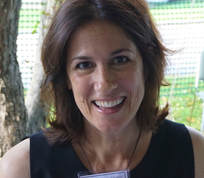 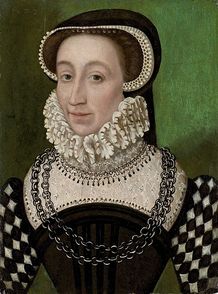 Catherine de Medici. She didn't travel light. Catherine de Medici. She didn't travel light. During the Renaissance, French kings and queens built many palaces, in an area known as the Loire Valley. The royal family would travel from palace to palace to get away from Paris, the way you might head to a lake house. The Loire Valley is not very close to Paris. It’s about 110 miles from Paris to the palace of Chambord, for instance. I wondered how long it took sixteenth century travelers to make this journey—and why there were so many palaces. First, the distance. Under the best of conditions (good roads, decent weather, level ground), humans can walk four miles per hour over long distances. Horses can’t do much better–maybe five mph—but a lot less if they’re pulling something or if roads are in awful condition. A horse can canter at 20 mph, but it can only do that for six to eight miles at a time, after which it will slow down and walk, or stop completely. So it would have taken a long time to get from place to place. Under the best conditions, a journey from Paris to Chambord would have taken three weeks. But in fact, it took a lot longer than that. Because in the sixteenth century, the royal court didn’t just hop on a horse and head to their country home. They took everything and everyone with them, loading all the stuff onto the backs of horses and mules. When Catherine de Medici was queen of France, she traveled with her ladies and gentlemen, foreign ambassadors, pet bears, servants, retainers, attendants, apothecaries, astrologists, tutors, musicians, cooking pots, food, clothing, portable triumphal arches, wall hangings, and furniture. And the reason there were so many palaces is simply that the court in Renaissance times –thousands of people–had to move around from estate to estate so as to find new hunting grounds. Once they’d exhausted the food supply in the area, they moved on to the next estate. Also, the sanitation was dreadful. After thousands of people had taken up residence in and around a great estate for a few weeks, filth piled up, and with it, stench and disease. The royal procession could be miles long. When Catherine de Medici’s court packed up and left for a new palace, the beginning of the royal caravan sometimes entered a town before those traveling at the back of it had left the last one.  Sara Albee's recent book is Why'd They Wear That?, published by National Geographic in 2015. Get ready to chuckle your way through centuries of fashion dos and don'ts! In this humorous and approachable narrative, you will learn about outrageous, politically-perilous, funky, disgusting, regrettable, and life-threatening creations people have worn throughout the course of human history, all the way up to the present day. For more information, click here. MLA 8 Citation
Albee, Sarah. "Renaissance Road Trips." Nonfiction Minute, iNK Think Tank, www.nonfictionminute.org/the-nonfiction-minute/renaissance-road-trips. 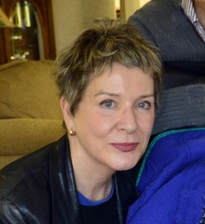 Who would build the world’s tallest building – the powerful Bank of Manhattan Trust Company down on Wall Street or Walter P. Chrysler, the automobile tycoon up on 42nd Street? It was early 1929, and a race for the sky raged in New York City. In late summer, the newspapers reported that the bank soared to 973 feet, just two feet higher than planned for the Chrysler Building. To the king of cars this was intolerable, so he turned to his architect, William Van Alen, who decided to outfox the competition. Five months later, people in New York were treated to an extraordinary sight. In 90 minutes, a splendid tower, topped by a silvery spire, with triangular windows, emerged from the building’s open roof. Secretly assembled in the fire shaft, it rose to a height of 1,046 feet, making the Chrysler Building the world’s tallest building. Van Alen had given Chrysler a structure that not only scraped the sky, he also, most imaginatively, used details of cars as decorations. Near the top of the building perched eight eagle-headed gargoyles, based on the hood ornament of a 1929 Chrysler Plymouth. Thirty-six stories above the street, there’s a wrap-around frieze of stylized cars featuring real metal hubcaps and four giant radiator caps. For a few months, until the Empire State Building took over as the world’s tallest building, Chrysler relished his number one status. His lavish apartment was near the top, and he boasted to friends and foes alike that he had the highest toilet in the city. So there he sat, on his porcelain throne, delighting in his elevated position. Chrysler and Van Alen expected rave reviews when the building was completed, but that didn’t happen. “The height of commercial swank,” sneered The New York Times. “Stunt design, with no serious significance,” sniffed The New Yorker, and another newspaper accused the spire of having the “appearance of an uplifted swordfish.” But things change. Now some 75 years later, the Chrysler Building is many people’s favorite skyscraper, and recognized as an outstanding example of Art Deco, the style of the twenties and thirties. Above all, there’s that incomparable swordfish-nose spire. It was Van Alen’s aim to have the triangular windows lit up at night. And now, long after his death, they do, launching the Chrysler Building into the Manhattan sky with all the fantasy and glitter of the Jazz Age. 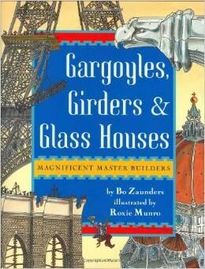 Roxie Munro is not only an author, but she is also an illustrator. She did the art for Gargoyles, Girders & Glass Houses by Bo Zaunders, a superb picture book tribute to seven of history's most celebrated architectural wonder-workers; It takes readers from the domes of Florence to the mosques of Turkey, from the Eiffel Tower to the Chrysler Building. Stunning illustrations and lively text evoke the passion and genius of builders whose inspiring work spans five centuries and six countries. For more information, click here. MLA 8 Citation
Munro, Roxie. "The Race for the Sky." Nonfiction Minute, iNK Think Tank, 5 Dec. 2017, www.nonfictionminute.org/ The-Race-For-The-Sky.  St. Paul's Cathedral during the blitz of World War II. When I interview people in my work as a writer, I soak up the stories they share about their lives. This is what brings history alive. I’ve always wished for a way to interview historic buildings, because they could tell stories from such a different perspective, having seen it all and heard it all. My dream interview would be St. Paul’s Cathedral in London, a place rich with history—and therefore, with stories. I have learned that those with the most to say can be wary of interviewers. Sometimes employing a little charm can help them warm up. So I would begin by complimenting St. Paul’s on how wonderful it looks for a building that opened in 1708. I would reference its great architect, Christopher Wren, who was also an astronomer and mathematician, as is evidenced in many of its design elements. I’d mention its magnificent dome and its massive booming bells that can be heard for miles. “You’re the prize jewel in a city rich in architectural beauty,” I’d say. “No wonder so many notables have been baptized, married, and had their funerals here.” Flattered but still reserved, St. Paul’s might ask me what I like best about it. “I have two favorites,” I would reply earnestly, mentioning first the Crypt, where many of England’s war heroes are buried, along with famous painters and poets. (Writers and composers are at nearby Westminster Abbey). Other notables, like Florence Nightingale and Lawrence of Arabia, are here, too. It’s altogether quite a congenial place. Starting to thaw a bit, St. Paul’s might wonder aloud about my second favorite, and I would single out the American Memorial Chapel, located behind the High Altar and dedicated to the memory of the 28,000 Americans who died defending England in World War II. “And speaking of that war,” I would tell St. Paul’s, “I am awed by Londoners’ resolve that you, their national treasure, would not be destroyed during the Blitz when so much of the city burned. Volunteer firefighters, both men and women, were stationed at all times on your roof. When bombs exploded, starting fires, they were right there to put them out, a number of them sacrificing their lives.” St. Paul’s would nod, remembering. “The British love you very much,” I would say. St. Paul’s would pause, clear its throat, and then reply, “Let me tell you some of my stories.” © Andrea Warren, 2014
MLA 8 Citation Warren, Andrea. "How to Interview a Historic Building." Nonfiction Minute, iNK Think Tank, 13 Sept. 2017, www.nonfictionminute.org/the-nonfiction-minute/category/warren-andrea. 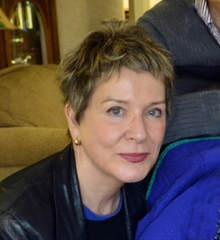 “What is this country bumpkin up to? Is this some kind of a joke?” Laughter rippled through the conference room in Richmond as Lemuel Chenoweth unloaded his saddlebags and took out a bunch of oak sticks wrapped in newspapers. He was the last builder to show his plans for the great competition in 1850 to build a bridge across the Tygart River in western Virginia (now West Virginia). Only a ferry connected the bustling north-south throughway at Philippi, causing traffic jams and the slowing of our young nation’s relentless commerce and travel. Engineers had come from all over the east to show their plans … blueprints of cable suspension bridges, fancy cantilevered structures, an arched bridge. It had to be durable, and support wagonloads of heavy goods and herds of livestock. ridge across the Tygart River in western Virginia (now West Virginia). Only a ferry connected the bustling north-south throughway at Philippi, causing traffic jams and the slowing of our young nation’s relentless commerce and travel. Quietly Lemuel assembled a miniature bridge, using no hammer or nails. Compared to the fancy bridge models shown, his was plain. Then, he pulled out two chairs, placed his construction across them, and spoke. “Since I have no blueprints,” he said, “you may allow me a demonstration.” Suddenly he stepped up onto the top of the model, and walked across it--from one end to the other. A gasp went up. No way could it hold! They knew their mathematics. Had this been the actual bridge it would have been as if a six-hundred-foot man stood on it. But the model held, and in the hushed silence that followed, Lemuel turned to the other contestants and asked, “Can you stand on your models?” No one dared. They all knew theirs would be crushed. And that's how Lemuel Chenoweth, a shy western Virginian with a third-grade education, won the competition for the famous Tygart River Bridge. The double-barreled bridge has survived fires, the Civil War, floods, and 18-wheeler trucks. It is the only covered bridge left in the US serving a federal highway. It has its own museum, and in 1983 Governor Jay Rockefeller declared June 15 Lemuel Chenoweth Day. Lemuel started out making furniture, wagons, and coffins, and later built houses, a church, and many bridges. He married Nancy Hart, the great-granddaughter of John Hart, signer of the Declaration of Independence. They had 13 children. So how do we know about this story? Because Lemuel Chenoweth was my great-great- granddaddy, and throughout my childhood I heard the story of Lemuel, the model bridge, and the two chairs. 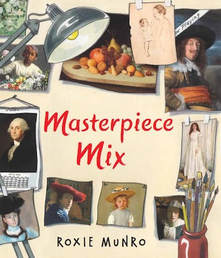 Roxie Munro's newest book uses thirty-seven of her favorite masterpieces by great artists as an inspiration for her own masterpiece that is a cityscape and a game. You can read a review of the book here. Roxie is also a member of iNK's Authors on Call where you can invite her to your classroom virtually. MLA 8 Citation Munro, Roxie. "Lemuel's Bridge." Nonfiction Minute, iNK Think Tank, 16 Oct. 2017, www.nonfictionminute.org/the-nonfiction-minute/lemuels-bridge. |
*NEWS
|
For Vicki Cobb's BLOG (nonfiction book reviews, info on education, more), click here: Vicki's Blog
The NCSS-CBC Notable Social Studies Committee is pleased to inform you
that 30 People Who Changed the World has been selected for Notable Social Studies Trade Books for Young People 2018, a cooperative project of the National Council for the Social Studies (NCSS) & the Children’s Book Council
Categories
All
Abolitionists
Adams Janus
Adaptation
Adaptations
Adkins Jan
Advertising
Aerodynamics
Africa
African American History
African Americans
Africa West
Agriculture
Aircraft
Air Pilots
Air Pressure
Air Travel
Albee Sarah
Alchemy
Alligators
Allusion
American History
American Icons
Amphibians
Amundsen Roald
Anatomy
Ancient
Ancient Cultures
Anderson Marian 1897-1993
Animal Behavior
Animal Experimentation
Animal Intelligence
Animals
Animation
Antarctica
Ants
Apache Indians
Apes
April Fool's Day
Architecture
Argument
Arithmetic
Art
Art Deco
Artists
Arts
Asia
Astronauts
Astronomy
Athletes
Atomic Theory
Audubon Societies
Authors
Autobiography
Automobiles
Aviation
Awards
Bacteria
Baseball
Battuta Ibn
Bears
Beatles
Beavers
Bees
Biodegradation
Biography
Biology
Biomes
Biomimicry
Biplanes
Birds
Black Death
Black History
Blindness
Blizzards
Bombs
Bonaparte Napoleon
Boone Daniel
Botany
Brazil
Bridges
Brill Marlene Targ
Brooklyn Bridge
Brown John
Buffaloes
Building Materials
Butterflies
Caesar
Caesar Julius
Caissons
Calculus
Calendars
Cannibal
Capitals
Caravaggio
Carbon Dioxide
Carnivores
Carson Mary Kay
Cartoons & Comics
Carving (Decorative Arts)
Cascade Range
Castaldo Nancy
Castles
Castrovilla Selene
Cathedrals
Cats
Caves
Celts
Cemeteries
Chemistry
Children's Authors
Child Welfare
China
Choctaw Indians
Christmas
Chronometers
Cicadas
Cinco De Mayo
Ciphers
Circle
Citizenship
Civil Rights
Civil Rights Movements
Civil War
Civil War - US
Climate
Climate Change
Clocks And Watches
Clouds
Cobb Vicki
COBOL (Computer Language)
Code And Cipher Stories
Collard III Sneed B.
Collectors And Collecting
Color
Commerce
Communication
Competition
Compilers
Composers
Computers
Congressional Gold Medal
Consitution
Contests
Contraltos
Coolidge Calvin
Cooling
Corms
Corn
Counterfeiters
Covid-19
Crocodiles
Cryptography
Culture
Darwin Charles
Declaration Of Independence
Decomposition
Decompression Sickness
Deep-sea Animals
Deer
De Medici Catherine
Design
Detectives
Dickens Charles
Disasters
Discrimination
Diseases
Disney Walt
DNA
Dogs
Dollar
Dolphins
Douglass Frederick 1818-1895
Droughts
Dr. Suess
Dunphy Madeleine
Ear
Earth
Earthquakes
Ecology
Economics
Ecosystem
Edison Thomas A
Education
Egypt
Eiffel-gustave-18321923
Eiffel-tower
Einstein-albert
Elephants
Elk
Emancipationproclamation
Endangered Species
Endangered-species
Energy
Engineering
England
Englishlanguage-arts
Entomology
Environmental-protection
Environmental-science
Equinox
Erie-canal
Etymology
Europe
European-history
Evolution
Experiments
Explorers
Explosions
Exports
Extinction
Extinction-biology
Eye
Fairs
Fawkes-guy
Federalgovernment
Film
Fires
Fishes
Flight
Floods
Flowers
Flute
Food
Food-chains
Foodpreservation
Foodsupply
Food-supply
Football
Forceandenergy
Force-and-energy
Forensicscienceandmedicine
Forensic Science And Medicine
Fossils
Foundlings
France
Francoprussian-war
Freedom
Freedomofspeech
French-revolution
Friction
Frogs
Frontier
Frontier-and-pioneer-life
Frozenfoods
Fugitiveslaves
Fultonrobert
Galapagos-islands
Galleys
Gametheory
Gaudi-antoni-18521926
Gender
Generals
Genes
Genetics
Geography
Geology
Geometry
Geysers
Ghosts
Giraffe
Glaciers
Glaucoma
Gliders-aeronautics
Global-warming
Gods-goddesses
Gold-mines-and-mining
Government
Grant-ulysses-s
Grasshoppers
Gravity
Great-britain
Great-depression
Greece
Greek-letters
Greenberg Jan
Hair
Halloween
Handel-george-frederic
Harness Cheryl
Harrison-john-16931776
Health-wellness
Hearing
Hearing-aids
Hearst-william-randolph
Henry-iv-king-of-england
Herbivores
Hip Hop
History
History-19th-century
History-france
History-world
Hitler-adolph
Hoaxes
Holidays
Hollihan Kerrie Logan
Homestead-law
Hopper-grace
Horses
Hot Air Balloons
Hot-air-balloons
Housing
Huguenots
Human Body
Hurricanes
Ice
Icebergs
Illustration
Imagery
Imhotep
Imperialism
Indian-code-talkers
Indonesia
Industrialization
Industrial-revolution
Inquisition
Insects
Insulation
Intelligence
Interstatecommerce
Interviewing
Inventions
Inventors
Irrational-numbers
Irrigation
Islands
Jacksonandrew
Jazz
Jeffersonthomas
Jefferson-thomas
Jemisonmae
Jenkins-steve
Jet-stream
Johnsonlyndonb
Jokes
Journalism
Keeling-charles-d
Kennedyjohnf
Kenya
Kidnapping
Kingmartinlutherjr19291968
Kingmartinlutherjr19291968d6528702d6
Kings-and-rulers
Kings Queens
Kings-queens
Koala
Labor
Labor Policy
Lafayette Marie Joseph Paul Yves Roch Gilbert Du Motier Marquis De 17571834
Landscapes
Languages-and-culture
Law-enforcement
Layfayette
Levers
Levinson Cynthia
Lewis And Clark Expedition (1804-1806)
Lewis Edmonia
Liberty
Lift (Aerodynamics)
Light
Lindbergh Charles
Liszt Franz
Literary Devices
Literature
Lizards
Longitude
Louis XIV King Of France
Lumber
Lunar Calendar
Lynching
Macaws
Madison-dolley
Madison-james
Madison-james
Mammals
Maneta-norman
Maneta-norman
Marathon-greece
Marine-biology
Marine-biology
Marines
Marsupials
Martial-arts
Marx-trish
Mass
Massachusetts-maritime-academy
Mass-media
Mastodons
Mathematics
May-day
Mcclafferty-carla-killough
Mcclafferty-carla-killough
Mckinley-william
Measurement
Mechanics
Media-literacy
Media-literacy
Medicine
Memoir
Memorial-day
Metaphor
Meteorology
Mexico
Mickey-mouse
Microscopy
Middle-west
Migration
Military
Miners
Mississippi
Molasses
Monarchy
Monsters
Montgomery
Montgomery-bus-boycott-19551956
Montgomery-heather-l
Monuments
Moon
Moran-thomas
Morsecode
Morsesamuel
Moss-marissa
Moss-marissa
Motion
Motion-pictures
Mummies
Munro-roxie
Munro-roxie
Musclestrength
Museums
Music
Muslims
Mythologygreek
Nanofibers
Nanotechnology
Nathan-amy
Nathan-amy
Nationalfootballleague
Nationalparksandreserves
Nativeamericans
Native-americans
Native-americans
Naturalhistory
Naturalists
Nature
Nauticalcharts
Nauticalinstruments
Navajoindians
Navigation
Navy
Ncaafootball
Nervoussystem
Newdeal19331939
Newman-aline
Newman-aline
Newton-isaac
New-york-city
Nobelprizewinners
Nomads
Nonfictionnarrative
Nutrition
Nylon
Nymphs-insects
Oaths Of Office
Occupations
Ocean
Ocean-liners
Olympics
Omnivores
Optics
Origami
Origin
Orphans
Ottomanempire
Painters
Painting
Paleontology
Pandemic
Paper-airplanes
Parksrosa19132005
Parrots
Passiveresistance
Patent Dorothy Hinshaw
Peerreview
Penguins
Persistence
Personalnarrative
Personification
Pets
Photography
Physics
Pi
Pigeons
Pilots
Pinkertonallan
Pirates
Plague
Plains
Plainsindians
Planets
Plantbreeding
Plants
Plastics
Poaching
Poetry
Poisons
Poland
Police
Political-parties
Pollen
Pollution
Polo-marco
Populism
Portraits
Predation
Predators
Presidentialmedaloffreedom
Presidents
Prey
Prey-predators
Prey-predators
Prime-meridian
Pringle Laurence
Prohibition
Proteins
Protestandsocialmovements
Protestants
Protestsongs
Punishment
Pyramids
Questioning
Radio
Railroad
Rainforests
Rappaport-doreen
Ratio
Reading
Realism
Recipes
Recycling
Refrigerators
Reich-susanna
Religion
Renaissance
Reproduction
Reptiles
Reservoirs
Rheumatoidarthritis
Rhythm-and-blues-music
Rice
Rivers
Roaringtwenties
Roosevelteleanor
Rooseveltfranklind
Roosevelt-franklin-d
Roosevelt-theodore
Running
Russia
Safety
Sanitation
Schwartz David M
Science
Scientificmethod
Scientists
Scottrobert
Sculpture
Sculpturegardens
Sea-level
Seals
Seals-animals
Secretariesofstate
Secretservice
Seeds
Segregation
Segregationineducation
Sensessensation
September11terroristattacks2001
Seuss
Sextant
Shackletonernest
Shawneeindians
Ships
Shortstories
Silkworms
Simple-machines
Singers
Siy Alexandra
Slavery
Smuggling
Snakes
Socialchange
Social-change
Socialjustice
Social-justice
Socialstudies
Social-studies
Social-studies
Sodhouses
Solarsystem
Sound
Southeast-asia
Soybean
Space Travelers
Spain
Speech
Speed
Spiders
Spies
Spiritualssongs
Sports
Sports-history
Sports-science
Spring
Squirrels
Statue-of-liberty
STEM
Storms
Strategy
Sugar
Sumatra
Summer
Superbowl
Surgery
Survival
Swanson-jennifer
Swinburne Stephen R.
Synthetic-drugs
Taiwan
Tardigrada
Tasmania
Tasmanian Devil
Tasmanian-devil
Technology
Tecumsehshawneechief
Telegraph-wireless
Temperature
Tennis
Terrorism
Thomas Peggy
Thompson Laurie Ann
Time
Titanic
Tombs
Tortoises
Towle Sarah
Transcontinental-flights
Transportation
Travel
Trees
Trung Sisters Rebellion
Tundra
Turnips
Turtles
Typhoons
Underground Railroad
Us-environmental-protection-agency
Us History
Us-history
Ushistoryrevolution
Us History Revolution
Us-history-war-of-1812
Us Presidents
Ussupremecourtlandmarkcases
Vacations
Vaccines
Vangoghvincent
Vegetables
Venom
Vietnam
Viruses
Visual-literacy
Volcanoes
Voting-rghts
War
Warne-kate
Warren Andrea
Washington-dc
Washington George
Water
Water-currents
Wax-figures
Weapons
Weather
Weatherford Carole Boston
Whiting Jim
Wildfires
Winds
Windsor-castle
Wolves
Woman In History
Women
Women Airforce Service Pilots
Women-airforce-service-pilots
Womeninhistory
Women In History
Women-in-science
Women's History
Womens-roles-through-history
Wonder
Woodson-carter-godwin-18751950
World-war-i
World War Ii
World-war-ii
Wright Brothers
Writing
Writing-skills
Wwi
Xrays
Yellowstone-national-park
Zaunders Bo
ArchivesMarch 2021
February 2021
January 2021
December 2020
November 2020
October 2020
September 2020
June 2020
May 2020
April 2020
March 2020
February 2020
January 2020
December 2019
October 2019
September 2019
August 2019
July 2019
May 2019
April 2019
March 2019
February 2019
January 2019
December 2018
November 2018
September 2018
June 2018
May 2018
April 2018
March 2018
February 2018
January 2018
December 2017
November 2017
October 2017
September 2017
March 2017
The NONFICTION MINUTE, Authors on Call, and. the iNK Books & Media Store are divisions of iNK THINK TANK INC.
a 501 (c) (3) nonprofit corporation. To return to the iNK Think Tank landing page click the icon or the link below. :
http://inkthinktank.org/
For more information or support, contact thoughts@inkthinktank.org
For Privacy Policy, go to
Privacy Policy
© COPYRIGHT the Nonfiction Minute 2020.
ALL RIGHTS RESERVED.
This site uses cookies to personalize your experience, analyze site usage, and offer tailored promotions. www.youronlinechoices.eu
Remind me later
Archives
March 2023
February 2023
January 2023
December 2022
November 2022
October 2022
September 2022
June 2022
May 2022
April 2022
March 2022
February 2022
January 2022
December 2021
November 2021
September 2021
April 2021
March 2021
February 2021
November 2020
October 2020
September 2020
June 2020
May 2020
April 2020
March 2020
February 2020
January 2020
October 2019
August 2019
July 2019
May 2019
April 2019
December 2018
September 2018
June 2018
May 2018
March 2018
February 2018
January 2018
December 2017
November 2017
October 2017
September 2017


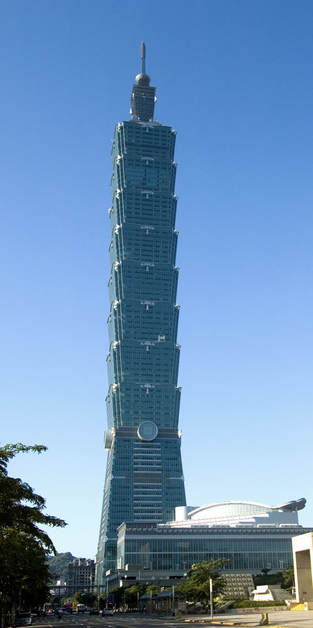



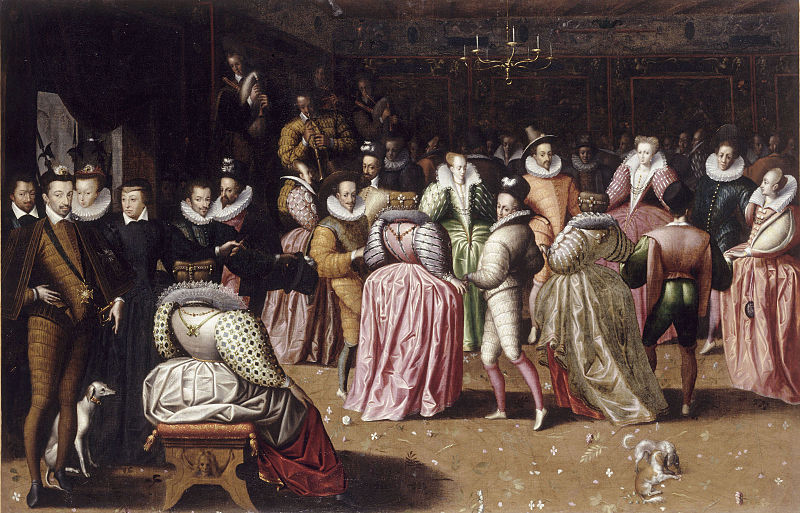
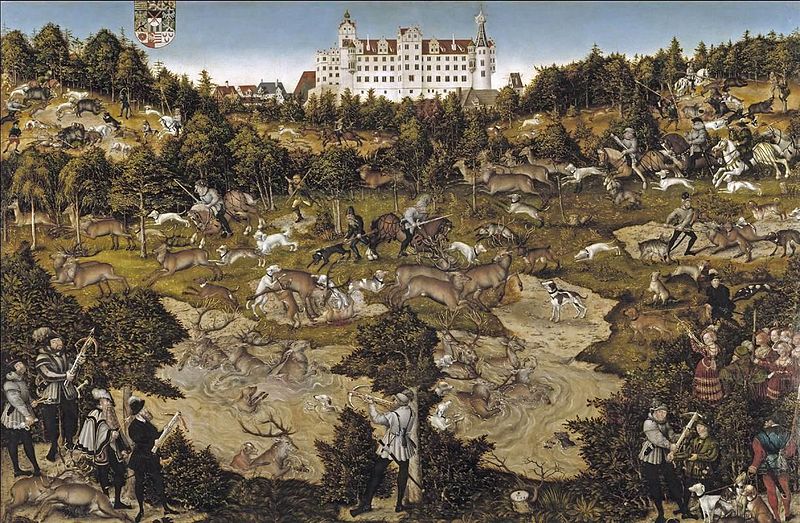
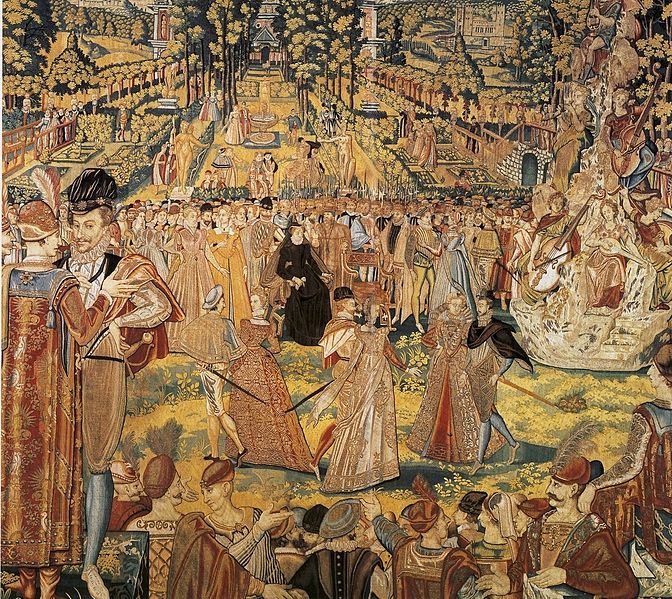



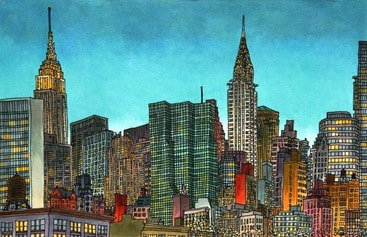
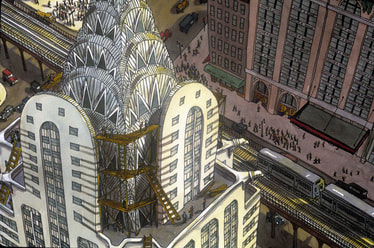
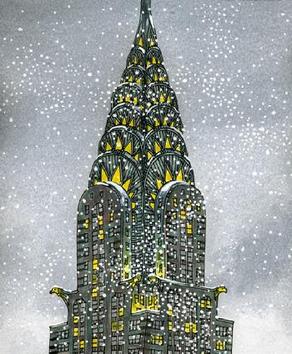
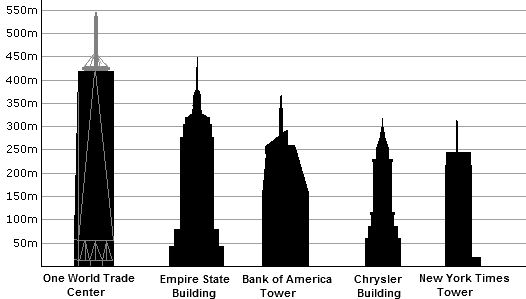


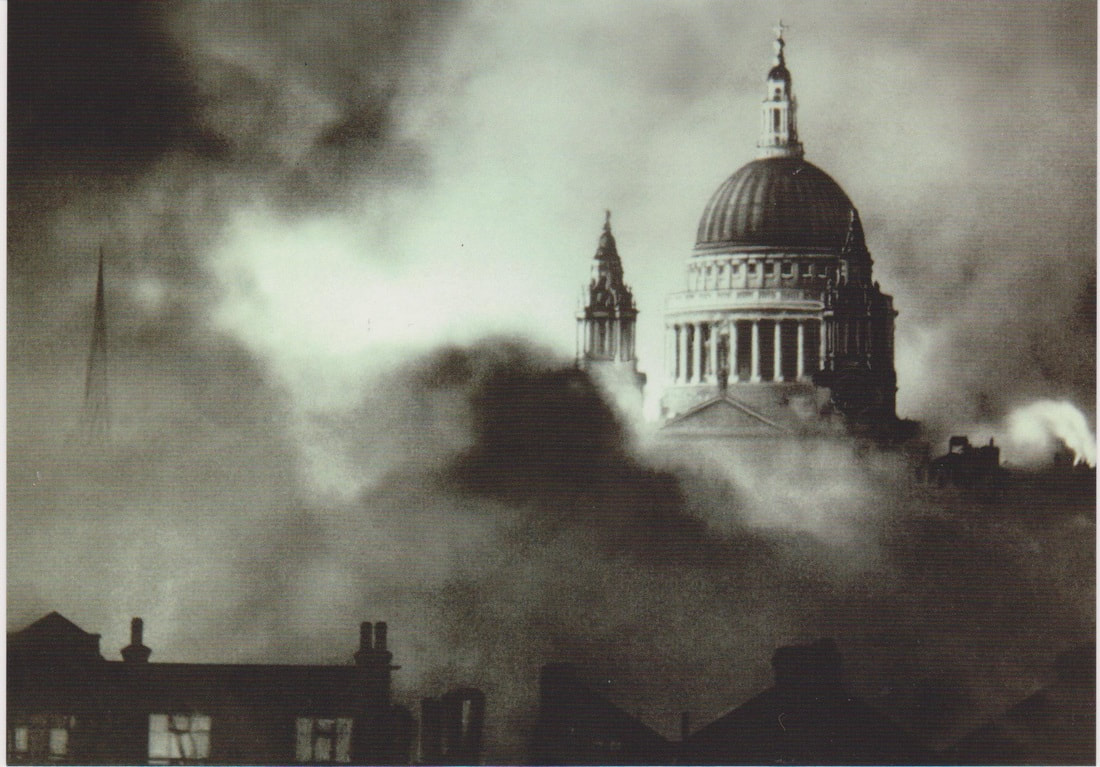
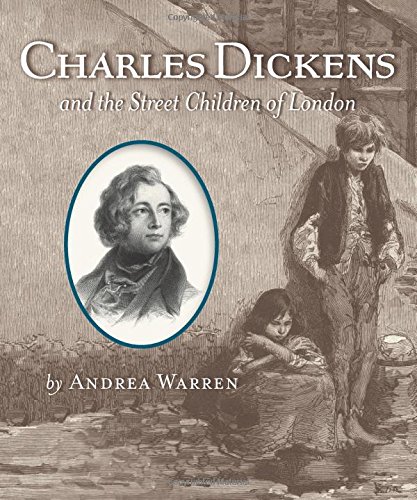



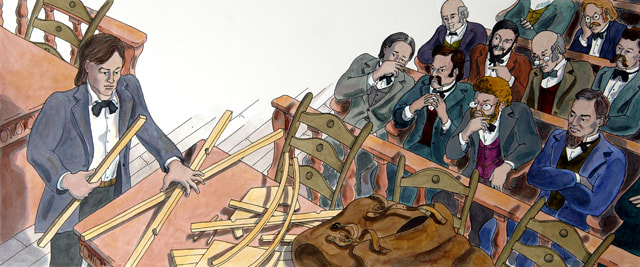
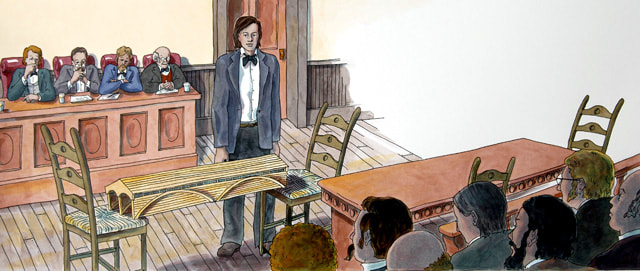
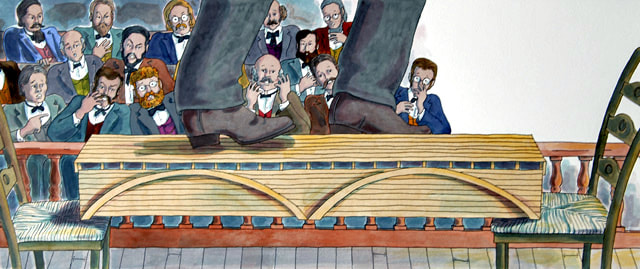
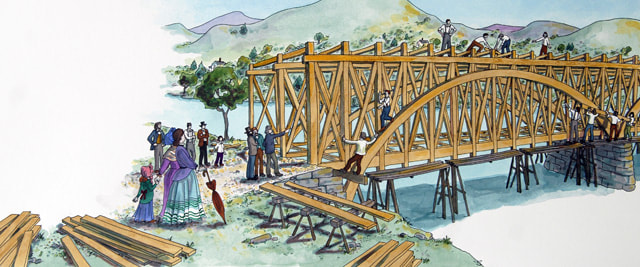
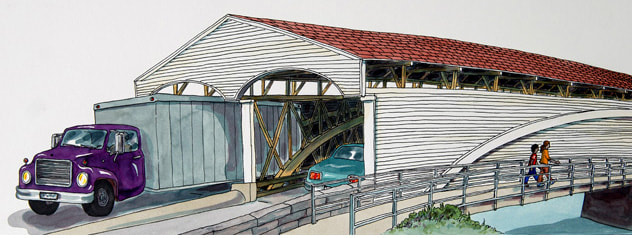

 RSS Feed
RSS Feed
